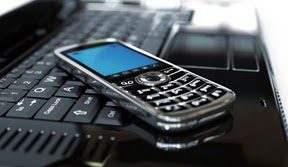We’ve all read about informal learning. Mobile is where it belongs. The traditional corporate university has radically changed.
Many employees are mobile, they work from home, and in some jobs turnover is high. On top of that, younger workers have grown up with mobile devices they use all day. If we want corporate learning to be compelling and relevant, it must be personalized, timely and continuous. It should be as mobile as we are.
For many years the training industry — led by the military — built specialized, expensive learning platforms you could take on the road. These custom systems were justified for very high-value training problems but were often too expensive for most corporate needs.
Today, however, mobile technology is inexpensive and highly connected, enabling us to rethink the whole mobile learning problem. We’ve all read about informal learning. Mobile is where it belongs.
A leader at Qualcomm whom I recently talked with realized learning might be the last thing employees want to do with their mobile device. His strategy is to use mobile apps to support daily work. This means delivering a whole range of mobile productivity apps: time and expense, website access, relevant business news and internal communications.
In a subtle but integrated way, this company is weaving learning — short on-demand videos, business apps, links to classes, product information and performance support — into an employee’s day-to-day life.
The company added even more power by creating a software development toolkit so content developers could access location information as part of training.
For example, imagine if a telecommunications service professional who went out to repair an antenna received an automatic notification to take a refresher course on equipment in that particular office, triggered by his or her physical location. This is true real-time capability development.
Consider how a regional health care organization might focus on compliance training. A one-person mobile learning team could provide short three- to four-minute leadership development videos and webcast content repurposed for mobile delivery via audio podcasts with slides.
A mobile LMS could track data in the company’s enterprise LMS, including informal learning experiences such as reading articles, accessing procedures and updates. The mobile solution could greatly improve employees’ ability to meet their required annual training hours.
Compliance training continues to absorb as much as 10 to 15 percent of a training department’s budget. These are often excellent programs for mobile devices, since people want to take these courses when they’re not busy at work but instead are at a coffee shop or on the road.
For example, mobile learning has become a critical part of SAP’s training for its highly mobile sales organization. The company has created a gaming-like app for employees’ tablets that provides bite-sized chunks of content that can be tailored to specific needs while using popular sharing features such as rating and recommendations.
The app was created so everything is just one tap away on the tablet. A popular section lets people see what others are accessing. A “top of mind” section contains content that is new or that the organization wants to push. A recognition section and a peer video series provide a place for peers to talk to each other and be recognized for a job well done.
Think about how we use apps on our mobile devices every day. Today’s mobile learning programs aren’t courses; they look and feel more like apps that help us find information, price products, answer questions or locate experts.
No longer should organizations look to lift and shift e-learning content from a desktop PC to a mobile device. It is time to reimagine the potential and think about how we use learning as an application within our everyday life.
Long ago, books were written on the importance of specialized performance support and online electronic performance support systems. Did we ever imagine that these expensive systems would be replaced by mobile devices which feel like gaming platforms?
This is what high-impact learning is all about — bringing information, skills and capability to people in the most compelling and practical manner possible.












